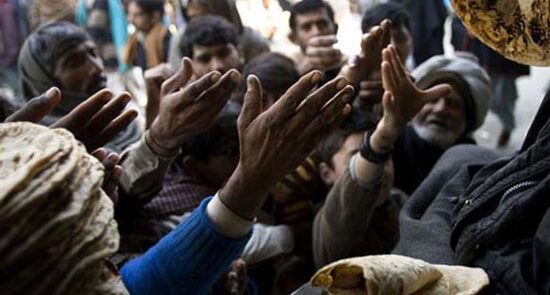Afghanistan, Economic, Politics, Security, Social February 18, 2025
Short Link:World Bank Report: Afghanistan’s Economic Recovery is Slow and Challenging
The World Bank has stated in its latest report that Afghanistan’s economic recovery is facing multiple and continuous challenges, progressing slowly and uncertainly.
According to the report published on February 18, major factors such as the Taliban government’s ambiguous policies, financial isolation, a sharp decline in foreign aid, and reduced trade relations with Pakistan are among the primary reasons for Afghanistan’s economic stagnation.
Millions of Afghans in Extreme Poverty; Unemployment and Declining Purchasing Power
The World Bank highlights that millions of Afghans continue to live in difficult economic and social conditions due to:
High levels of poverty and rising unemployment
Limited livelihood opportunities and decreasing purchasing power
The impact of prolonged wars and natural disasters
These factors have made it extremely difficult for the Afghan people to meet even their basic needs.
Decline in International Aid and Afghanistan’s Economic Crisis
Afghanistan has been heavily dependent on foreign aid for the past 50 years. However, after the fall of the previous government and the Taliban’s return to power in 2021, international aid significantly decreased. This, coupled with banking restrictions, the freezing of Afghan assets, and the withdrawal of foreign investors, has led to a severe economic downturn in the country.
Key Economic Challenges Identified by the World Bank
The World Bank report highlights several fundamental challenges as major obstacles to Afghanistan’s economic recovery:
Ambiguity in Taliban’s Economic Policies
Lack of transparency in financial and banking policies
Absence of a clear strategy for sustainable economic growth
Issues in managing domestic resources and attracting foreign investment
Financial and Banking Isolation
Limited access to Afghanistan’s assets in international banks
Disconnection of Afghan banks from the global banking system
Lack of investor confidence in the country’s financial system
Reduction in Foreign Aid
Afghanistan’s historical dependency on international assistance
Sharp decline in aid from humanitarian organizations and global banks
Direct impact of this reduction on public welfare and development projects
Weak Trade Relations with Pakistan and Neighboring Countries
Increased trade tensions with Pakistan and occasional border closures
Decline in exports and imports due to security and customs issues
Absence of an effective trade policy to attract regional investors
The Future of Afghanistan’s Economy: Hope or Further Crisis?
Given these challenges, experts believe Afghanistan’s economic future remains uncertain unless:
The Taliban adopt more transparent economic and banking policies.
Afghanistan improves its financial and trade relations with neighboring countries and the world.
Domestic and foreign investors regain confidence in the country.
International humanitarian aid increases to prevent total economic collapse.
Conclusion
Afghanistan remains stuck in an economic crisis, with no immediate signs of improvement. The decline in international aid, domestic market stagnation, widespread poverty, and weak Taliban economic policies are the main barriers to growth. Without serious economic and financial reforms, the living conditions of Afghan people will deteriorate further, increasing the likelihood of more severe humanitarian and economic crises in the near future.










